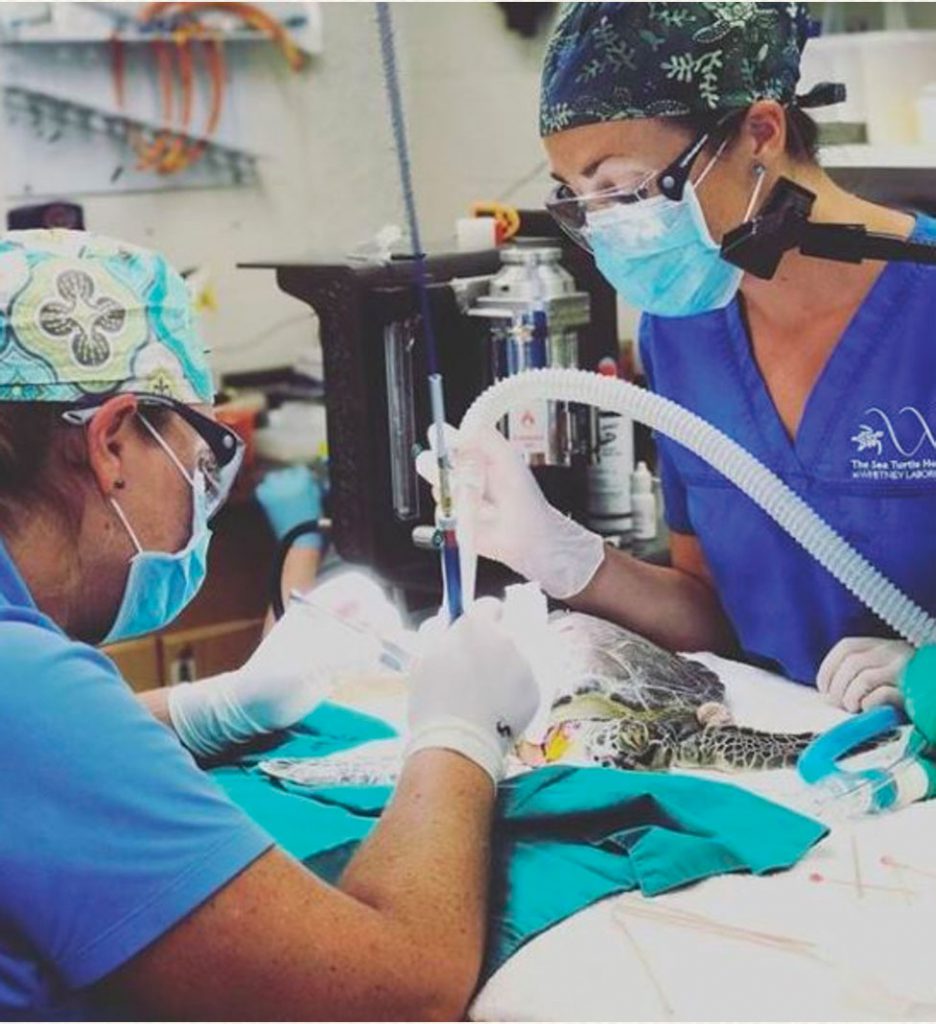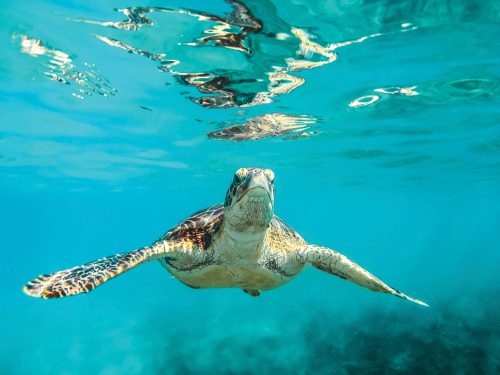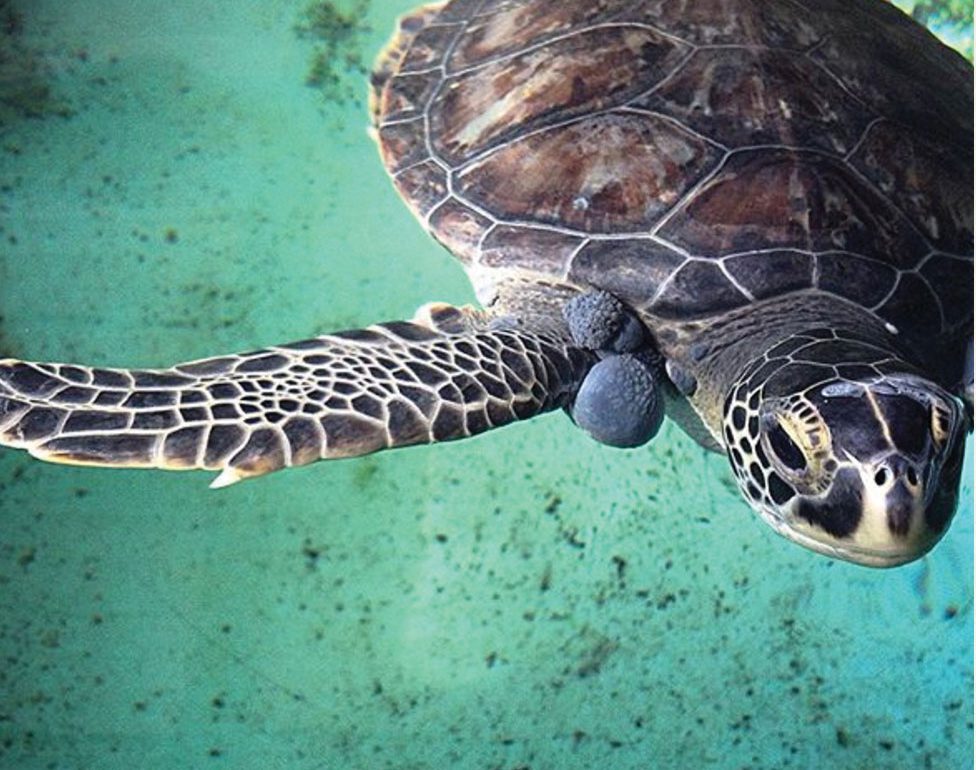In 1938, when fibropapillomatosis was first reported in sea turtles in the Florida Keys, it seemed to be an anomaly.
By 2017, more than 250 sea turtles with viral disease stranded in Florida and had to be taken to treatment facilities.
The explosion in the fibropapillomatosis is likely due to human-caused changes in the state’s coastal environment, says David Duffy, a molecular biologist who researches fibropapillomatosis at the Sea Turtle Hospital at the University of Florida’s Whitney Laboratory for Marine Bioscience.
The viral disease causes tumor-like growths that can obstruct sea turtles’ ability to see, feed or breed, impede the movement of their flippers, and even damage internal organs. The tumors can range from pea-sized to football-sized and have been reported in all seven species of sea turtle, although they are most common in green turtles. While green turtle populations are currently on the rise, fibropapillomatosis is “undermining conservation efforts across the globe,” Duffy says.
“Rates of stranding have increased and the percentage of sea turtle populations with the disease has as well,” Duffy says. “It is continuing to spread.”

From its first report in the Keys, it took until 2010 for it to be reported in North Florida. Now, it has spread up the eastern seaboard into coastal South Carolina.
The increase in fibropapillomatosis is one of the reasons for the opening in 2015 of the Sea Turtle Hospital at UF, which got its start with funding from private donors. At the time, turtles stranded with the disease had to be taken to South Georgia or Central Florida, the transportation time adding to the burden of the disease. In its first year, the hospital treated and released about 60 turtles, and Duffy, a postdoctoral researcher in 2015, has been on hand since the beginning.
Now, as a newly hired faculty member, Duffy will open his own lab in February and focus on genetic features of the disease and the ways in which fibropapillomatosis shares characteristics with herpes virus in humans. Already, he and his colleagues at UF and at the Turtle Hospital in Marathon have discovered that certain drugs used to treat human cancers are therapeutic for diseased sea turtles.
The hospital uses the latest equipment, including lasers for surgery and scanning equipment to visualize internal tumors. Sixteen turtles at a time can be treated in 1,000-gallon tanks that are designed to keep them from becoming habituated to humans. The goal is to keep them wild so that when they are rehabilitated, they can be released into the ocean and fend for themselves.
Although the hospital is still new, Duffy says it could treat more animals if it could expand.
“But the Whitney Lab is also a research facility, so this is really an opportunity for us to not only treat individuals but actually conduct research that will let us determine what’s driving this disease,” Duffy says.

Hatchling turtles and adults live in the open ocean, which appears to spare them the ravages of fibropapillomatosis, Duffy says. It is the juvenile turtles that get sick when they return to coastlines to forage. The virus occurs naturally in coastal waters, but the incidence of the disease goes up in highly populated coastal areas as opposed to pristine coasts, so Duffy and other researchers are hoping to identify which anthropogenic influences cause the disease to spike.
Unlike a traditional virus, the disease doesn’t spread population to population, Duffy says.
“It’s not enough to be exposed to the virus. The animal also has to be exposed to an environmental factor,” Duffy says. “Clearly, there is a connection to people. Something we do changes the marine environment and allows the virus to spread. The rate of the disease is highest in areas with high human activity.”
By using genetic sequencing, Duffy hopes to address the genetic causes of the tumors and perhaps spare the turtles rounds of surgery — sometimes as many as five or six — by identifying drug therapies that can aid recovery.
“These turtles are already facing threats from global warming and plastics in the ocean,” Duffy says. “The additional peril from this disease can be quite devastating. It’s an additional hurdle for them to overcome.”
Source:
- David Duffy, Sea Turtle Hospital, Whitney Laboratory for Marine Bioscience
Related:
- Sea Turtle Hospital News
- Could human cancer treatments be the key to saving turtles from a disfiguring tumor disease?
- UF researchers, Disney team up to protect butterflies, sea turtles
This article was originally featured in the Fall 2019 issue of Explore Magazine.

